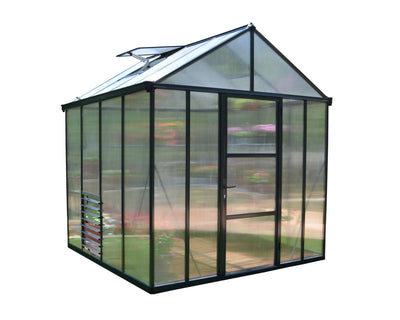Winter Greenhouse Maintenance Checklist for Kiwi Gardeners
Why Winter Maintenance Matters
As the colder months set in, maintaining your greenhouse becomes essential to protect your crops and ensure ongoing productivity. Winter presents a different set of challenges than summer: reduced light, fluctuating temperatures, high humidity, and limited airflow can all impact plant health and slow down growth. With a bit of forward planning and regular care, your greenhouse can remain a warm, productive space that supports vegetables, herbs, and seedlings right through winter.
Regular maintenance isn’t just about preserving your structure, it’s about creating the right growing conditions inside. From cleaning and sealing to airflow management and watering, every small step helps build a healthier, more stable environment for your plants.
Start with a Thorough Clean
Dirty panels reduce the amount of available sunlight, a major problem in winter when light is already limited. Give both the inside and outside of your greenhouse a proper clean before winter sets in. Use a soft brush or cloth and a mild, non-toxic detergent to remove algae, dust, and mineral deposits from glazing panels. Be careful not to scratch polycarbonate or acrylic surfaces. Clean surfaces let in more light, which directly benefits plant growth in the colder months.
It’s also a good time to clean the inside structure, remove any accumulated debris or clutter, and check for signs of pests or disease. A clean space sets the stage for healthy winter growth.
Seal Up Gaps and Retain Heat
Inspect your greenhouse for cracks, gaps, or failing seals. Cold air entering through unsealed joints, doors, or vents can rapidly reduce the internal temperature and stress your plants. Apply greenhouse tape or weather stripping to seal these areas and keep warmth inside. You may also want to add temporary insulation to north-facing walls or around the base to improve thermal retention.
Even a well-sealed greenhouse will lose some heat overnight, but sealing makes a significant difference, especially in frosty regions. Tighten nuts and bolts regularly for greenhouse stability - this is also advisable after a period of high winds.
Airflow and Humidity Control
It might be cold outside, but proper ventilation is still critical. Without adequate airflow, condensation builds up inside your greenhouse, creating a humid environment that encourages mould, mildew, and fungal diseases. Open vents or doors for short periods during the warmest part of the day to release excess moisture. If your greenhouse doesn't have vent systems installed, consider adding automatic vent openers or manually operated louvres to help regulate humidity levels more easily.
Water with Care
During winter, plants use less water, and evaporation slows significantly. This means you’ll need to adjust your watering schedule. Always check soil moisture before watering, overwatering in winter is a common mistake that can lead to root rot. Make sure containers and raised beds have adequate drainage, and avoid splashing water onto leaves where possible.
You can also mulch around plants to help regulate soil temperature and retain moisture, reducing the frequency of watering even further.
Clean and Inspect Equipment
Take advantage of slower winter growth to service your tools and equipment. Clean, sharpen, and oil your pruners, shears, and trowels. Inspect irrigation hoses, watering cans, shelving, and plant supports for wear or damage. Replacing a cracked hose or unstable bench now prevents future headaches and ensures you're ready for spring when growth surges.
It’s also a good time to tidy up and organise your space. A clutter-free greenhouse is easier to maintain and more enjoyable to work in, especially on cold mornings.
Consider Upgrades for Easier Winter Growing
If you’re finding winter greenhouse management challenging, small upgrades can make a big difference. A Hybrid Greenhouse with twin-wall roof panels will retain more warmth and withstand frost better than single-wall alternatives. Adding shelving increases usable space and improves air circulation, while accessories like digital thermometers help you keep an eye on internal temperatures. Automatic vent openers or solar fans can maintain optimal airflow without daily effort.
By investing a little time in maintenance and preparation, your greenhouse can become a reliable, warm refuge for winter crops, and a productive space that supports your gardening goals all year round.
















